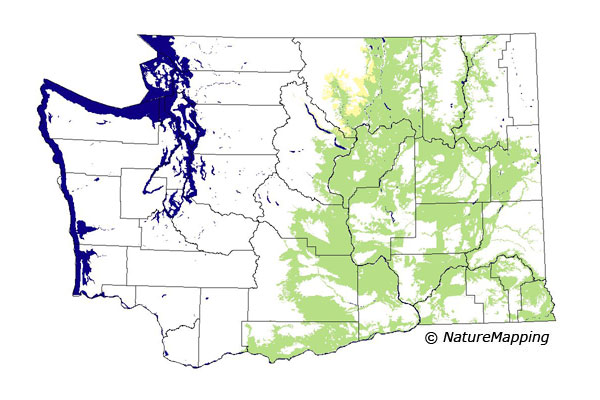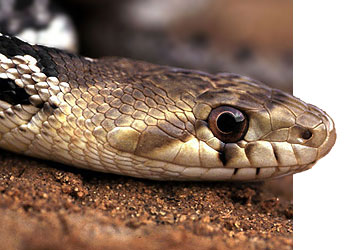
Breeding Range Map
The green area shows the predicted habitats for breeding only.
© NatureMapping Program
+ enlarge map
Metadata
(Data about data or how the map was made)
Predicted breeding range
 = Core Habitat = Core Habitat
 = Marginal Habitat = Marginal Habitat
|
|

Fact Sheet:
Basic |
Advanced |
Español
Breeding Range Map
Reptiles do not migrate as some birds and mammals, so the colored areas depict the predicted range for the Gopher snake year-round. The habitats were identified using 1991 satellite imagery, other datasets and experts throughout the state, as part of the Washington Gap Analysis Project.

Observations
|
Distribution and Habitat Requirements
The Gopher snake occurs in a lot of different habitats, including prairies,
conifer forests and deserts, but it seems most common in semi-arid brushy
areas adjacent to farms (Nussbaum et al., 1983). Sweet (1985) found that
they were more common that rattlesnakes in open grassland habitats.
Models
The Southeast, East Central and Northeast Cascades, Columbia Basin, Okanogan
Highlands and Northeast Corner ecoregions were selected.
All steppe, Ponderosa Pine and Oak zones were core, except that Ponderosa
Pine was marginal in the Northeast Cascades.
Good habitats were rivers and riparian areas with all types of wetland vegetation,
soil conservation reserve areas, grasslands, shrublands, shrub and tree savannas
and open-canopy hardwod/conifer and conifer forests.
Translated from the Washington Gap Analysis Amphibians and Reptiles Volume by Karen Dvornich
Webpage designed by Dave Lester.
|

